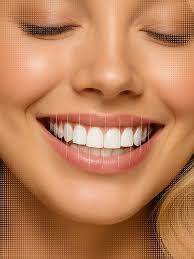If you're exploring modern cosmetic dentistry, you might wonder, "What tools are used in Digital Smile Design?" Digital Smile Design in Dubai (DSD) is a state-of-the-art system that blends technology with dental artistry to create a customized smile. To achieve this precision, dental professionals use a variety of digital tools and software throughout the DSD process. Each tool plays a specific role in diagnosis, planning, visualization, and execution—ensuring your new smile is not only beautiful but functionally sound and uniquely yours.
Digital Photography and Videography Tools:
The first step of Digital Smile Design involves capturing detailed images and videos of your face, smile, and expressions. This visual data is essential to analyze how your teeth move in real life and how they integrate with your facial features.
Tools used in this stage include:
- DSLR or high-resolution digital cameras – to take clear, accurate photos of your teeth and face from multiple angles
- HD video recording devices – to capture natural expressions like speaking, laughing, and smiling
- Facial scanning apps or equipment – to map facial proportions and symmetry
- Lighting equipment and retractors – to ensure visibility and clarity in intraoral photos
These visuals form the baseline for planning a smile that fits your personality and dynamic expressions.
Intraoral Scanners and 3D Imaging Devices:
To gather precise measurements of your teeth and gums, Digital Smile Design uses advanced scanning technology. These scanners eliminate the need for traditional dental molds and offer greater accuracy and comfort.
Common 3D scanning tools include:
- Intraoral scanners (like iTero, TRIOS, or Medit) – to create a digital replica of your mouth in minutes
- Cone Beam CT (CBCT) – to provide a 3D view of bone structure, ideal for implant planning
- Extraoral scanners – to capture jaw movement and external contours
- Occlusal mapping tools – to assess bite alignment and balance
These high-tech tools ensure every tooth is mapped in stunning detail, enabling a flawless design process.
Smile Design Software and Visualization Tools:
One of the most revolutionary elements of DSD is its ability to simulate your future smile before any treatment begins. This is made possible through powerful smile design software that blends imaging, CAD (computer-aided design), and artistic customization.
Top software and programs used include:
- DSDApp – a leading software created specifically for Digital Smile Design
- Smile Designer Pro – integrates digital photography with tooth library overlays
- 3Shape Dental System – used for CAD design of crowns, veneers, and prosthetics
- Exocad – ideal for comprehensive aesthetic and restorative planning
- Photoshop and Keynote/PowerPoint – used for visual mock-ups and emotional storytelling
These programs allow dentists and patients to collaborate on the final look and feel of the new smile, fostering confidence and informed decision-making.
3D Printing and Prototyping Devices:
Once your smile is digitally designed, physical mock-ups or trial smiles may be created using 3D printing technology. These prototypes give you the chance to “test drive” your new smile and make any desired adjustments before finalizing treatment.
Tools involved in this stage:
- 3D printers (resin or dental-specific) – to produce models, guides, and mock-ups
- Milling machines – to fabricate restorations from ceramic or composite materials
- Prototyping wax-ups – to physically visualize the new smile shape on a model
- Mock-up trays or shells – placed directly on your teeth for a preview
These tools add a tactile dimension to DSD, allowing you to see and feel the results in advance.
Communication and Collaboration Platforms:
Digital Smile Design is often a team effort involving cosmetic dentists, orthodontists, lab technicians, and sometimes even digital artists. To ensure smooth coordination, specialized platforms are used to share files, plans, and feedback in real-time.
Popular tools for collaboration include:
- DSD Cloud – secure storage for imaging, case plans, and simulations
- TeamViewer or Zoom – used for virtual case discussions with lab partners
- Cloud-based patient management systems – to keep records organized and accessible
- WhatsApp or email integrations – for quick updates and feedback loops
These platforms make the DSD process efficient, transparent, and globally accessible.
Treatment Execution Technology:
Finally, when it’s time to bring your smile design to life, dentists rely on digital tools for precision and consistency during treatment. These tools ensure the final result matches the design as closely as possible.
Devices used during this phase include:
- Guided surgery tools – especially for implant placement based on the DSD plan
- Laser dentistry equipment – for soft tissue reshaping and gum contouring
- Digital shade-matching tools – to match restorations to natural teeth precisely
- CAD/CAM fabrication systems – for same-day crowns and veneers
- Photography for before-and-after documentation – to track progress and final results
These tools help ensure your DSD journey is smooth from planning through to the final smile.

